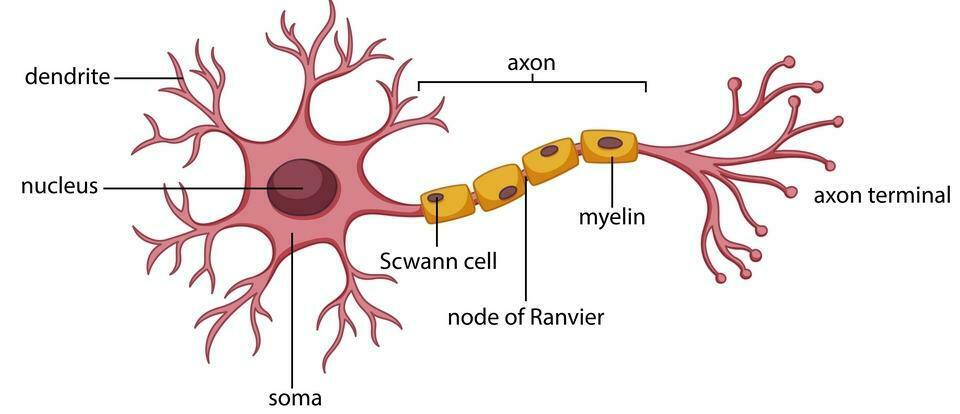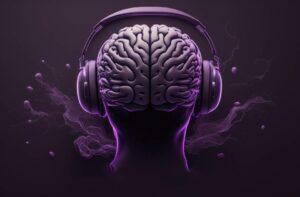Hey Joe, hey Jane! It's time dive into the fascinating world of "neuroplasticity". Neuroplasticity refers to our brain's ability to adapt, change, and rewire itself throughout our lifes, allowing us to learn new skills, form new habits, and even recover from brain injuries. But don't worry, we'll be focusing on neuroplasticity for self-improvement, not injury recovery (we leave that to the Medical Pros). "Use it or lose it" is definitely applicable here, so let's get down to it.
I've put together a detailed, and easy-to-follow guide to help you harness the power of neuroplasticity for personal growth and self-improvement. So, buckle up and get ready to explore the incredible potential of your brain!
Understanding Neuroplasticity
Before we dive into the how-to's, let's take a moment to understand what neuroplasticity is and why it's so important for self-improvement.
The human brain is the most complex and fascinating organ in our body. With its billions of neurons, it allows us to reason, learn, and adapt. The term neuroplasticity refers to the brain's ability to change and adapt throughout a person's life, allowing new neural connections to form and existing ones to strengthen or weaken. This incredible ability is what allows us to learn new skills and adapt to new situations. Neuroplasticity occurs throughout our lives, it is vital and especially important in the brain development of babies and children, but tends to decrease with age.
On a simplistic basis – the brain is full of cells called neurons – roughly 4 billion of them – but it's the way they interconnect that is important. The term neural net(work) – now widely used in AI speak too – refers back to how our brain is set up in this way. Those neurons interconnect through synapses to be able to send electrical signals from one to the next. This process of building pathways is how we store our knowledge. Repeatedly exercising the same pathways strengthens them, but if they lie unused for a long term the connections will deteriorate – simple put – we forget. So, now you can see why repetition is an important part of learning. So, the end goal here is to keep our brains active and build lots of new neural pathways.

Anatomy of a Neuron Cell
For the average person – or the above-average person for that matter – neuroplasticity is the key to unlocking your brain's potential for learning new skills, enhancing cognitive performance, and overcoming limitations. By understanding the basics and utilizing neuroplasticity, you can take charge of your brain's growth and development and ultimately lead a happier, healthier, and more successful life. A lot more detail can be found in the FAQs and Resources, so check them out if your are interested to know more – I've tried to keep the scientific terminology to a minimum in the body of this post.
The Four Pillars of Neuroplasticity
Now that we've covered the basics, let's get into the nitty-gritty of how to harness neuroplasticity for self-improvement. So, there are four essential pillars to support and enhance neuroplasticity:
- Physical Exercise
- Mental Stimulation
- Social Engagement
- Stress Management and Sleep
By incorporating these four pillars into your daily routine, you'll create an environment that fosters neuroplasticity and empowers you to achieve your personal growth goals. Let's dive into each pillar and explore how to make the most of them.
Pillar 1: Physical Exercise – Get Moving!
Physical exercise isn't just good for your body; it's also crucial for your brain's health and neuroplasticity. Regular physical activity has been shown to increase the production of neurotrophic factors, such as BDNF, supporting the growth and survival of neurons. Exercise gets your blood pumping, and so improves blood flow to the brain. This promotes the growth of new blood vessels and the overall health of neural networks. It also helps to reduce inflammation in the brain, which can lead to improved cognitive function.
To make the most of exercise for neuroplasticity, follow these tips:
- Engage in a mix of aerobic exercises (e.g., walking, running, swimming, cycling) and strength training (e.g., weightlifting, bodyweight exercises) for a well-rounded fitness routine.
- Aim for at least 150 minutes of moderate-intensity aerobic exercise per week, spread across multiple days.
- -Incorporate balance and coordination exercises, like yoga or tai chi, to challenge your brain in new ways and support cognitive function.
Pillar 2: Mental Stimulation – Flex Your Mental Muscles
Just like your body needs regular exercise, your brain needs mental stimulation to stay sharp and support neuroplasticity. Engaging in a variety of mentally challenging activities will help create new neural connections and strengthen existing ones. This is probably the most important of the pillars. Here are some ways to flex your mental muscles and enhance neuroplasticity:

Firing Synapse
Learn A New Skill
Improving your own neuroplasticity means boosting your brain's ability to adapt and learn new things. One of the best ways to achieve this is by learning a new skill. By diving into a new area of knowledge or activity, you challenge your brain to form new neural connections and strengthen existing ones. This can improve cognitive function, memory, and overall brain health.
- Learn a new language. Language learning engages various cognitive functions, such as memory, attention, and pattern recognition.
- On the subject of languages, don't forget python or javascript. Upleveling your computer skills is a prime activity for developing those new neural connexions.
- Pick up a musical instrument and start learning to play. This activity challenges your brain to coordinate fine motor skills, auditory processing, and memory, promoting new neural connections.
Engage in Creative Activities
Engaging in creative activities is an effective way to improve your own neuroplasticity. Participating in creative activities such as drawing, painting, writing or even listening to music has been shown to increase the neural connections in the brain (watching reruns on TV – not so much!). By challenging your brain with novel and diverse experiences, helping you build up your brains connections. As a further benefit, doing creative activities reduces stress, induces a greater sense of positive emotions, and improves overall wellbeing. So, picks some activities you would like to try and jump in. Setting goals is very useful here, to keep you on track and engaged.
Problem Solving and Challenging Tasks
Problem-solving is a critical aspect of improving neuroplasticity, the brain's ability to change and adapt throughout life. When we encounter challenges and work through them, we create new neural connections and strengthen existing ones.
To improve your problem-solving skills, start by breaking down complex problems into smaller, more manageable parts, and identify the underlying causes of the problem. Then, consider multiple perspectives and brainstorm possible solutions. Don't be afraid to seek input and feedback from others, and remember to stay adaptable and open to alternative approaches.
When you think of building new neural pathways by having novel thoughts – that is what problem solving is all about.
Games and Apps – let's make it fun – why not?
- Play brain training games on apps like Lumosity, Elevate, or BrainHQ to target specific cognitive skills like memory, attention, and problem-solving.
- Practice the Dual N-Back working memory task, which requires you to recall both visual and auditory stimuli in a sequence. This exercise has been shown to improve working memory and fluid intelligence.
- Solve Sudoku and crossword puzzles to challenge your problem-solving and logical thinking skills, promoting new neural connections.
Remember, variety and novelty are essential for promoting neuroplasticity. Engage in a diverse range of mental exercises and continue to challenge yourself by increasing the difficulty or trying new activities.
Pillar 3: Social Engagement – Connect and Thrive
Social engagement is a vital aspect of brain health and neuroplasticity. Interacting with others stimulates the release of neurotransmitters, such as oxytocin and dopamine, which contribute to the growth and maintenance of neural networks.
Here's how to boost neuroplasticity through social engagement:
- Maintain strong social connections with friends and family. Regularly engage in meaningful conversations and activities together.
- Join clubs or groups that share your interests, such as book clubs, hobby groups, or sports teams. These environments offer opportunities for new learning experiences and social connections.
- Volunteer in your community. Helping others not only enriches your life but also exposes you to new experiences and social interactions that can benefit your brain.
- Attend workshops, seminars, or conferences to learn new skills and meet like-minded individuals.
Pillar 4: Stress Management, Affirmations and Sleep – Rest and Recharge
Lastly, managing stress and ensuring adequate sleep are crucial for maintaining optimal brain health and promoting neuroplasticity. Chronic stress can have negative effects on the brain, while quality sleep allows the brain to consolidate new memories, remove waste products, and repair damaged neural connections.
Sleep
- Establish a consistent sleep schedule, aiming for 7-9 hours of sleep per night.
- Create a relaxing bedtime routine that includes activities like reading, meditation, or gentle stretching to signal to your brain that it's time to wind down.
- Minimize exposure to screens and blue light before bedtime, as these can interfere with your natural sleep-wake cycle.
Stress
- Practice stress reduction techniques like deep breathing exercises, progressive muscle relaxation, or mindfulness meditation.
- Mindfulness involves paying attention to the present moment without judgment while being aware of your thoughts, feelings, and bodily sensations. It can help increase grey matter in the brain, which is responsible for memory and cognition.
Positive Affirmations
Positive affirmations are a powerful tool that can help improve neuroplasticity by rewiring the brain to create new neural pathways that support positive beliefs and behaviors.
- To start utilizing positive affirmations, begin by identifying any negative self-talk or limiting beliefs that you may have. Replace these negative thoughts with positive affirmations that inspire feelings of self-love, self-acceptance, and personal growth.
- Make sure to repeat your affirmations daily, either by saying them out loud or writing them down. This practice can help strengthen neural connections, making it easier to adopt a new mindset and transform negative thought patterns into positive ones.
- Be patient with yourself and persistent with your practice. It may take time to see results, but you will get there. Repetition strengthens those neural pathways.

Conclusion
There you have it! By incorporating the four pillars of neuroplasticity into your daily life, you can unlock your brain's potential for self-improvement and personal growth. Remember, the key to harnessing neuroplasticity is variety, novelty, and consistency.
Embrace new challenges, stay curious, and enjoy the journey of self-discovery as you transform your brain and your life. You've got this, Joe/Jane! So, go ahead and unleash the incredible power of your brain's neuroplasticity! Don't forget – "use it or lose it".
Doidge, N.: The Brain That Changes Itself: Stories of Personal Triumph from the Frontiers of Brain Science. - Penguin Books (2007).
Merzenich, M. M.: Soft-Wired: How the New Science of Brain Plasticity Can Change Your Life - Parnassus Publishing (2013).
Draganski, B., & May, A.: Training-induced structural changes in the adult human brain - Behavioural Brain Research, 192(1), 137-142 (2008).
More Posts for Mind Manipulation
 | Steve Cato is a PhD-level scientist who brings a strong scientific perspective to the study of mind improvement. |
Semantically Related Posts
Encoding: When we encounter new information or have a new experience, our brain begins the process of encoding that information. This involves transforming the information into a neural code that the brain can understand and manipulate. The hippocampus, a region in the medial temporal lobe of the brain, plays a crucial role in encoding new information.
Synaptic plasticity: As we learn, our brain's neurons form new connections and strengthen existing ones. This process is known as synaptic plasticity, which is the basis of neuroplasticity. Synaptic plasticity allows the brain to adapt and change its structure and function in response to new experiences and learning.
Long-term potentiation (LTP): LTP is a long-lasting increase in the strength of synaptic connections between neurons. It is thought to be one of the primary mechanisms underlying learning and memory formation. When neurons repeatedly fire together, the connections between them become stronger, making it easier for them to transmit information in the future. This process is often summarized by the phrase "neurons that fire together, wire together."
Consolidation: After encoding new information, the brain needs to consolidate it to form stable, long-term memories. Consolidation involves the transfer of information from short-term memory to long-term memory. This process can take place over minutes, hours, or even days and is facilitated by the hippocampus and other brain regions, including the neocortex.
Sleep: Sleep plays a critical role in the learning process by facilitating memory consolidation. During sleep, the brain replays and strengthens neural connections formed during wakefulness, helping to integrate new information into existing knowledge.
Retrieval: Once the brain has encoded and consolidated new information, it needs to be able to retrieve it when necessary. Retrieval is the process of accessing stored memories and bringing them to conscious awareness. This process relies on various brain regions, including the hippocampus and prefrontal cortex, which work together to search for and retrieve the relevant information.
Reinforcement and repetition: To solidify learning and make it more resistant to forgetting, the brain benefits from reinforcement and repetition. Revisiting information, practicing skills, and engaging in activities that reinforce learning can help strengthen neural connections and improve memory retention.
In summary, our brains learn by encoding new information, forming and strengthening neural connections through synaptic plasticity, consolidating memories, and retrieving information when needed. This complex process involves multiple brain regions and relies on factors such as sleep, reinforcement, and repetition to solidify learning and promote long-term memory retention.
Various forms of neuroplasticity include:
Developmental plasticity: This occurs when neurons rapidly grow branches and form synapses during early brain development. These connections are then strengthened or weakened based on sensory input, eventually leaving behind efficient networks of neural connections.
Homologous area adaptation: If a brain module becomes damaged early in life, its functions may shift to a homologous area in the opposite hemisphere. This may come at a cost to functions normally stored in that module.
Compensatory masquerade: This type of neuroplasticity refers to the brain finding an alternative strategy for carrying out a task when the initial strategy is impaired. It involves the reorganization of preexisting neuronal networks.
Cross-modal reassignment: This occurs when new inputs are introduced into a brain area deprived of its main inputs, such as touch input being redirected to the visual cortex in the occipital lobe of blind individuals.
Map expansion: This form of neuroplasticity involves the flexibility of local brain regions dedicated to specific functions or information storage. These regions grow and shrink based on repeated behavior or stimulus, usually taking place during the learning and practicing of a skill.
Neuroplasticity mechanisms can be employed for therapeutic purposes or to support the brain in recovering from stroke or other conditions. Research on neurogenesis and stem cell research has been spurred by the potential to enhance neurogenesis in adults suffering from stroke, Alzheimer's disease, Parkinson's disease, or depression.
In research settings, advanced imaging techniques like functional magnetic resonance imaging (fMRI) and diffusion tensor imaging (DTI) can be used to track changes in brain structure and function.
BDNF has several essential functions in the brain, including:
Neuronal growth and differentiation: BDNF promotes the growth and development of new neurons (neurogenesis) and helps in the differentiation of neurons into their mature forms. This is particularly important in areas of the brain responsible for learning and memory, such as the hippocampus.
Synaptic plasticity: BDNF supports synaptic plasticity, which is the ability of synapses (the connections between neurons) to change their strength and efficiency over time. Synaptic plasticity is crucial for learning, memory formation, and overall cognitive function.
Neuronal survival: BDNF helps protect existing neurons from damage and degeneration by providing essential support and nourishment. This neuroprotective function is particularly important in maintaining healthy brain function as we age.
Regulating neurotransmitters: BDNF is involved in the regulation of neurotransmitters, such as serotonin and dopamine, which play vital roles in mood, motivation, and other aspects of cognitive function.
BDNF levels can be influenced by various factors, including genetics, diet, exercise, and environmental conditions. Engaging in regular physical activity, consuming a healthy diet, and managing stress are some ways to promote higher BDNF levels and support overall brain health and function.
Find a quiet space where you can concentrate without distractions.
Choose a Dual N-Back app or online tool, such as Brain Workshop, BrainScale, or the Dual N-Back game on SoakYourHead.com. Alternatively, you can find various Dual N-Back apps on your smartphone's app store.
Start with the simplest version of the task, which is the 1-Back level. As you progress and improve, you'll move on to higher levels, like 2-Back, 3-Back, and so on.
In the Dual N-Back task, you'll be presented with a grid (usually a 3x3 grid) and a series of auditory letters. A square will light up in one of the grid positions, and a letter will be spoken aloud simultaneously.
Your goal is to remember the position of the square and the spoken letter from "N" steps back in the sequence. For example, in a 1-Back task, you need to remember the position and letter from the immediately previous step. In a 2-Back task, you would need to remember the position and letter from two steps back, and so on.
As the task progresses, squares will continue to light up in different positions, and new letters will be spoken. Whenever the current position or letter matches the one from "N" steps back, press the appropriate key or button on the app or website to indicate a match.
Practice the Dual N-Back task regularly (ideally, daily) for 15-20 minutes to improve your working memory and attention.
Remember, the Dual N-Back task can be challenging, especially at higher levels. It's normal to struggle initially, but with consistent practice, you'll see improvements in your performance. Be patient and persistent, and you'll gradually enhance your working memory and cognitive abilities.
No Previous Post | Using Positive Affirmations to Improve your Life |  |











